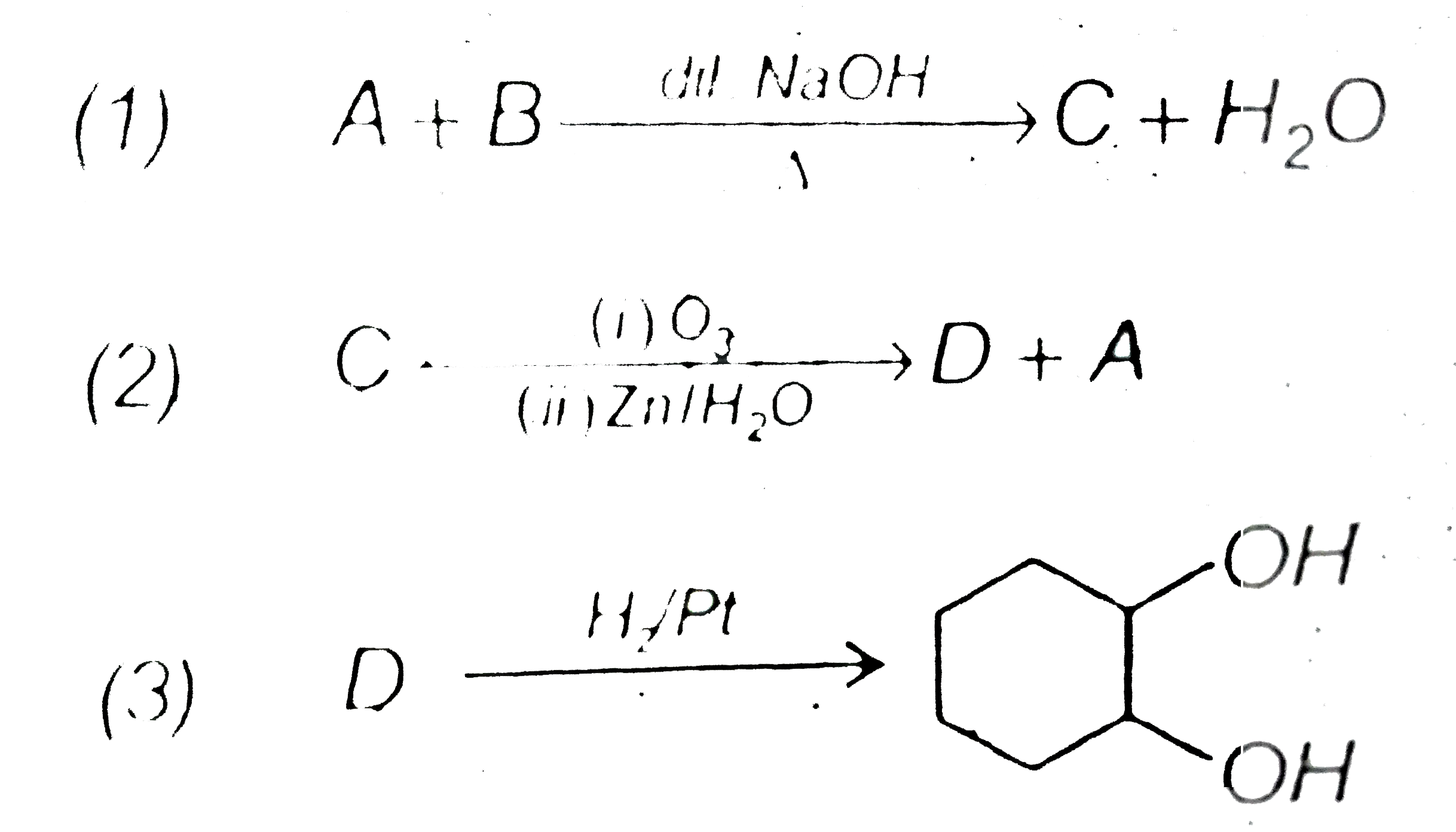Calculate the minimum mass of NaOH required to be added in RHS to consume all the H+ present in RHS of the cell of emf + 0.701 volt at 25∘C before its use. Also report the emf of the cell after addition of NaOH.
Zn∣∣∣Zn2+0.1 M∣∣∣∣∣∣HCl1 litre∣∣∣Pt(H2g)1 atm,E∘Zn/Zn2+=0.760V
To solve the problem, we will follow these steps:
Step 1: Write the cell reaction
The cell reaction involves zinc and hydrogen ions:
Zn+2H+→Zn2++H2
Step 2: Use the Nernst equation
The Nernst equation is given by:
Ecell=E0−0.0591nlog((Zn2+)(H+)2)
Where:
- Ecell=0.701V
- E0=0.760V
- n=2 (number of electrons transferred)
Step 3: Rearranging the Nernst equation
Substituting the known values into the Nernst equation:
0.701=0.760−0.05912log((0.1)(H+)2)
Step 4: Solve for the logarithm term
Rearranging gives:
0.05912log((0.1)(H+)2)=0.760−0.701
0.05912log((0.1)(H+)2)=0.059
log((0.1)(H+)2)=0.059×20.0591
log((0.1)(H+)2)≈2
Step 5: Exponentiate to find concentration of H+
Taking the antilogarithm:
(0.1)(H+)2=102
(H+)2=0.1100=0.001
(H+)=√0.001=0.0316M
Step 6: Calculate the moles of NaOH required
Since NaOH will neutralize H+ ions:
Moles of NaOH=(H+)=0.0316mol/L
For 1 L of solution, the moles of NaOH required is:
0.0316mol
Step 7: Calculate the mass of NaOH
Using the molar mass of NaOH (approximately 40 g/mol):
Mass of NaOH=moles×molar mass
Mass of NaOH=0.0316mol×40g/mol=1.264g
Step 8: Calculate the new EMF after addition of NaOH
After adding NaOH, the concentration of H+ ions becomes neutral:
(H+)=10−7M
Now, using the Nernst equation again:
Ecell=E0−0.05912log((0.1)(10−7)2)
Ecell=0.760−0.05912log(0.110−14)
Ecell=0.760−0.05912log(1015)
Ecell=0.760−0.0591×152
Ecell=0.760−0.442875≈0.3751V
Final Answers:
- Minimum mass of NaOH required: 1.264 g
- EMF of the cell after addition of NaOH: 0.3751 V
The cell reaction involves zinc and hydrogen ions:
Zn+2H+→Zn2++H2
The Nernst equation is given by:
Ecell=E0−0.0591nlog((Zn2+)(H+)2)
Where:
- Ecell=0.701V
- E0=0.760V
- n=2 (number of electrons transferred)
Substituting the known values into the Nernst equation:
0.701=0.760−0.05912log((0.1)(H+)2)
Rearranging gives:
0.05912log((0.1)(H+)2)=0.760−0.701
0.05912log((0.1)(H+)2)=0.059
log((0.1)(H+)2)=0.059×20.0591
log((0.1)(H+)2)≈2
Taking the antilogarithm:
(0.1)(H+)2=102
(H+)2=0.1100=0.001
(H+)=√0.001=0.0316M
Since NaOH will neutralize H+ ions:
Moles of NaOH=(H+)=0.0316mol/L
For 1 L of solution, the moles of NaOH required is:
0.0316mol
Using the molar mass of NaOH (approximately 40 g/mol):
Mass of NaOH=moles×molar mass
Mass of NaOH=0.0316mol×40g/mol=1.264g
After adding NaOH, the concentration of H+ ions becomes neutral:
(H+)=10−7M
Now, using the Nernst equation again:
Ecell=E0−0.05912log((0.1)(10−7)2)
Ecell=0.760−0.05912log(0.110−14)
Ecell=0.760−0.05912log(1015)
Ecell=0.760−0.0591×152
Ecell=0.760−0.442875≈0.3751V
- Minimum mass of NaOH required: 1.264 g
- EMF of the cell after addition of NaOH: 0.3751 V
Similar Questions
Calculate emf of cell at 25∘c
Cell notation.
M∣∣∣M2+0.01∣∣∣∣∣∣M2+0.0001∣∣∣M
if value of E0cell is 4 volt (given RTF in 10=0.06)View SolutionFind the emf of the cell Zn(s)∣∣Zn+2(0.01M)∣∣KCIsaturated∣∣Zn+2(1.0M)∣∣Zn(s)
View SolutionFind the emf of the cell Zn(s)∣∣Zn+2(0.01M)∣∣KCIsaturated∣∣Zn+2(1.0M)∣∣Zn(s)
View SolutionCalculate the emf and ΔG0 for the cell reaction at 25∘C:
Zn(s)∣∣Zn2+(aq)∣∣(0.1M)∣∣Cd2+(aq)∣∣(0.01M)Cd(s)
Given E0Zn2+/Zn=−0.763
and E0Cd2+/Cd=−0.403VView SolutionThe standard emf for the cell cell reaction Zn+Cu2+→Zn2++Cu is 1.10 volt at 25∘C. The emf for the cell reaction when 0.1MCu2+ and 0.1MZN2+ solutions are used at 25∘=C is .
View SolutionE∘ for the cell
Zn(s)∣∣Zn2+(aq)∣∣Cu2+(aq)∣Cu(s) is 1.1V at 25∘C the equilibrium constant for the cell reaction is aboutView SolutionIdentify A-D in the following reactions .

(1) A+BdilNaOH−−−−−→ΔC+H2O
(2) CdilNaOH−−−−−−−→(ii)Zn/H2OD+A
(3) View Solution
View SolutionCell voltages and half-cell potentials are often compeared under standard conditions called the standard state at a specified temperature (298K). The standard state requires all reagents to be pure with all gases at unit fugacity, all ions at unit activity and all electrical connections between half-cells to be made with platinum. Suppose following are half cell reaction, with respective emf (s) are -0.25 V and -0.3V.
Cell reaction I Pt(H2)∣HCl1 atm
Cell reaction II Pt(H2)∣H2SO41 atm
pH value of cell reaction I isView SolutionCell voltages and half-cell potentials are often compeared under standard conditions called the standard state at a specified temperature (298K). The standard state requires all reagents to be pure with all gases at unit fugacity, all ions at unit activity and all electrical connections between half-cells to be made with platinum. Suppose following are half cell reaction, with respective emf (s) are -0.25 V and -0.3V.
Cell reaction I Pt(H2)∣HCl1 atm
Cell reaction II Pt(H2)∣H2SO41 atm
pH value of cell reaction I isView SolutionThe EMF of the cell M∣∣Mn+(0.02M)∣∣∣∣H+(1M)∣∣H2(g)(1atm)Pt at 25∘C is 0.81V. Calculate the valency of the metal if the standard oxidation potential of the metal is 0.76V.
View Solution

